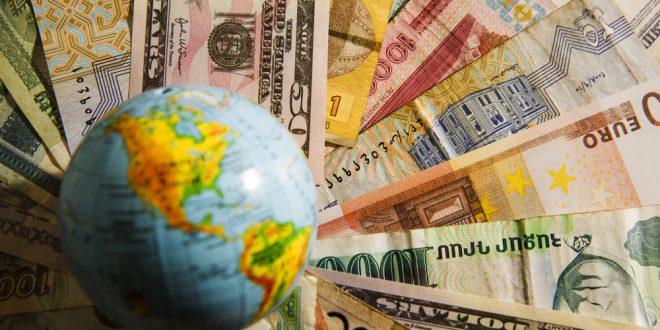The G-20 leaders decided on Saturday to implement the reporting framework for digital assets quickly since a sizable portion of their members want information exchange on these non-financial assets to begin by 2027. To prevent tax evaders from hiding their unreported wealth with such non-financial assets, the Crypto Asset Reporting Framework (CARF) or template is being developed.
The US Dollar Index has risen for the eighth consecutive week, reaching its highest close since February above 105.00. Economic data from the US and divergences in outlook compared to Europe and the Eurozone continue to support the strength of the US Dollar. However, the dollar recorded an obvious decline during trading on the last day of the week, Friday, as the greenback was subject to some downward pressure against the backdrop of the gains of some other major currencies.
What to watch in the new week
During the new trading week, the US Consumer Price Index (CPI) will be released, and more inflation data, including the Producer Price Index (PPI), are due on Thursday. Additionally, Retail Sales and Jobless Claims are also on the docket. These numbers will represent an important challenge for the Dollar’s rally. Evidence of a pronounced slowdown in economic activity and low inflation could make it difficult for the Dollar to extend its positive streak. Conversely, a rebound in inflation would provide further fuel to the rally.
Slowdown Fears
On Saturday, China released inflation data, closely watched by the markets, tha data indicated that China’s consumer prices returned to positive territory in August while factory-gate price declines slowed, data showed on Saturday, as deflation pressures ease amid signs of stabilization in the economy.
But analysts say more policy support is needed to shore up consumer demand in the world’s second-biggest economy, with a labour market recovery slowing and household income expectations uncertain.
The consumer price index (CPI) rose 0.1% in August from a year earlier, the National Bureau of Statistics said, slower than the median estimate for a 0.2% increase in a Reuters poll. CPI fell 0.3% in July.
The ongoing economic slowdown in China continues to be a negative factor for risk sentiment. Additionally, G20 meetings kick off during the weekend. EUR/USD posted another week of losses and closed near the 1.0700 area, the lowest level in months. Apart from a strong Dollar, the Euro was affected by dampened expectations regarding the European Central Bank (ECB) and its monetary policy.
The ECB will have its monetary policy meeting on Thursday, and it is unclear whether the central bank will raise interest rates further. AUD/USD dropped to its lowest level in months, falling below 0.6400. The Aussie remains under pressure amid lower commodity prices and concerns about the Chinese economy. Australia will report employment data on Thursday.
Performance of Other Key Assets
The USD/CAD pair resumed its upside movement after a pause last week, approaching 1.3700 but losing momentum. Positive employment data from Canada on Friday boosted the Loonie. Metals experienced sharp declines, but Gold managed to remain above $1,900, while Silver fell below $23.00, approaching a key medium-term support level at $22.50.
On Wall Street, While the Nasdaq Index recorded 15,280.22 points; surging by 0.14%, and the S&P 500 Index ended the last session of the previous trading week with an increase of 0.14% to settle near 4457.50 points, the Dow Jones Industrial Average rose by about 0.22% to 34,576.60 points.
Spot Brent crude contracts ended Friday’s trading up by about 0.72% to record $90,099 per barrel, in addition to spot contracts for WTI crude rising by 0.56% to $86,641 per barrel.
OPEC+
The Kingdom of Saudi Arabia, in cooperation with Russia, announced the extension of the voluntary reduction in crude oil production until the end of 2023; This pushed oil prices up to $90 a barrel, but prices quickly fell in subsequent trading.
Key Developments
Markets mainly focused on Eurozone data, as well as the Australian and Canadian interest rate decision, and a number of other varied data and key events. In terms of Eurozone data, the Euro settled around $1.07, staying close to the three-month low of $1.0705 achieved on September 5th. Industrial production in Germany fell by 0.8% month-on-month in July 2023, lower than market expectations of a 0.5% decline.
Core inflation rates remain stable at 5.5%, and retail sales in the eurozone fell 0.2% month-on-month in July 2023. The Monetary Policy Committee of the Bank of Canada decided to keep interest rates unchanged, settling the main interest rate at 5.00%.
 Noor Trends News, Technical Analysis, Educational Tools and Recommendations
Noor Trends News, Technical Analysis, Educational Tools and Recommendations





